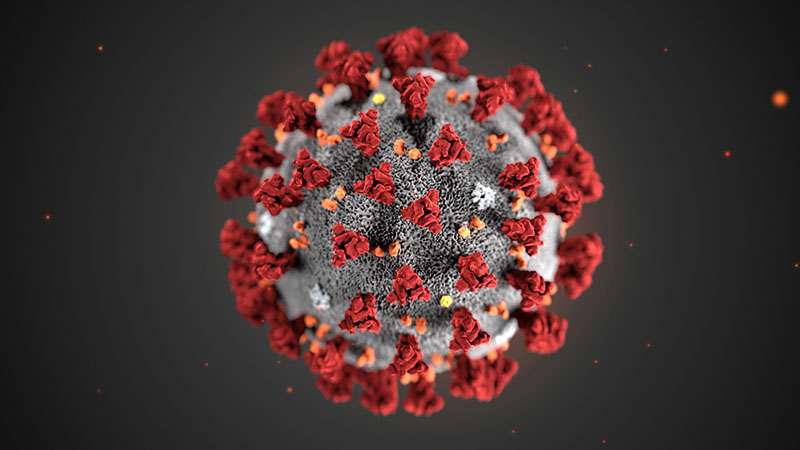Is it just flu or the dreaded COVID-19?
Kathmandu
The doubt that eats us is harmful, and now more so than ever with the world under the grip of COVID-19 pandemic.
Sneezing, coughing or fever that we always took as something just ‘off the weather’ has suddenly become warning signs of the deadly virus. With some of the symptoms of COVID-19 similar to that of flu and cold, many of us turn into bundles of nerves whenever we sneeze or cough. However, there are a few mobile and online applications which help in self-assessing the symptoms against those of COVId-19, or in consulting doctors over the phone.
Top Doctors Online (TDO) Nepal initiated the Nepalfightscorona.com on March 29. Aimed to provide awareness and assistance to people with services including Symptom Checker — a chatbot through which users can self assess if they are suspects of COVID-19 symptoms or not — and online consultations on COV- ID-19, there were around 5,100 interactions and consultations with doctors on COVID-19 during its first 10 days of service. “Fifteen per cent of visitors used Symptom Checker, and 28 per cent completed this test,” as per data provided by Country Manager for TDO Nepal, Ken Subedi.
“The virus has caused an overload on general OPD because a simple cough or cold provoke anxiety. So, doctors at Nepalfightscorona take proper case history over phone and ask only those people to visit fever clinic who are highly susceptible; others are asked to be quarantined at home,”
Subedi says. They have six doctors to provide phone consultations.
“Even if people are experiencing a cold, sore throat, fever, chest pain, they fear it might be the coronavirus,” shares one of the six doctors Dr Raj Lal Mandal, Medical Officer at Rajdhani Hospital and Jyoti Hospital. But “the symptoms with which people are calling seem to be of common cold, flu or seasonal allergy called rhinitis and pharyngitis”. When COVID-19 was declared a pandemic, his phone consultations were around 40- 45 per day, but the number has decreased now, he says.
The symptoms of common cold, flu and COV- ID-19 are almost similar, shares Dr Suyesh Karki, who with Doctor on Calls Nepal, is also offering consultations on COVID-19 through their online application since the second week of April. Diagnosis involves looking into medical history — what kind of symptoms and for how long has one had those. Dr Mandal admits, “It is tough to set the symptoms apart clinically.”
Reports say for up to five days or one week, the symptoms of COVID-19 seem similar to that of flu — breathing problems or shortness of breath, fever, runny nose and cough.
What sets COVID-19 apart is it worsens. “About 90-95 per cent of flu and common cold cases go on a resolution phase after five-seven days — one will start recovering. But the symptoms of COVID-19 will worsen after five-seven days — it will cause severe infection in respiratory tract. And it can be suspected of being a COVID-19 case, calling for a test. But in some cases, symptoms may worsen after two-three days,” Dr Mandal elaborates.
The symptoms of COV- ID-19 become severe as the infection spreads to the lungs. From sore throat, cold and cough, symptoms like pneumonia and lungs consolidation are seen.
“Though several body systems are affected, the most commonly affected system is the respiratory system.”
Another way to check is to see the contact history.
“Coronavirus is a case of transmission in Nepal — it was brought in by people from countries abroad. So we have to see the contact history of person who is calling us. Has s/he come from abroad? Did s/he come in contact with anyone coming from abroad? Have they come in contact with anyone suffering from cough and cold or COV- ID-19?” says Dr Mandal.
“If one has not been among the sick, has no history being among people coming from abroad, or people with COVID-19, s/he is not suspected of having coronavirus,” he says. As per Dr Karki, a person with travel history from foreign countries with a high grade fever and cough and cold is referred to a fever clinic. If there is no travel history and one has been staying at home and in Nepal, “s/he needs to have high grade fever, cold and cough and breathing problems” to be referred to a fever clinic.
Dr Karki warns, “If you have a common cold as well as breathing problem, and if the problem is increasing, you have to go to fever clinic despite having no fever.”
A version of this article appears in e-paper on April 29, 2020, of The Himalayan Times.






